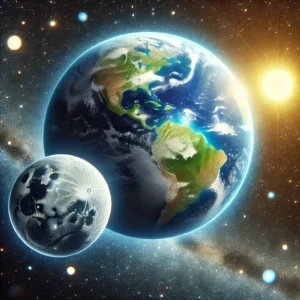Distance between earth
 Earth, the third planet from the Sun, is a vast and dynamic celestial body. Here’s a breakdown of its size and dimensions:
Earth, the third planet from the Sun, is a vast and dynamic celestial body. Here’s a breakdown of its size and dimensions:
Key Measurements of Earth:
- Equatorial Diameter: 12,742 kilometers (7,918 miles). This is the distance across Earth at the equator.
- Polar Diameter: 12,714 kilometers (7,900 miles). Earth is slightly flattened at the poles due to its rotation, making the polar diameter slightly smaller than the equatorial diameter.
- Surface Area: Approximately 510.1 million square kilometers (196.9 million square miles).
- Land: About 148.9 million square kilometers (29.2% of the total area).
- Water: About 361.2 million square kilometers (70.8% of the total area).
- Circumference:
- At the equator: 40,075 kilometers (24,901 miles).
- Through the poles: 40,008 kilometers (24,860 miles).
- Mass: About 5.972×10245.972 \times 10^{24} kilograms (1.316 \times 10^{25} pounds).
- Volume: Approximately 1.083×10121.083 \times 10^{12} cubic kilometers.
- Average Density: 5.51 grams per cubic centimeter, making it the densest planet in the solar system.
Comparison with Other Celestial Bodies:
- Earth is the largest terrestrial planet in the solar system in terms of mass and diameter.
- It is much smaller than the gas giants like Jupiter and Saturn, which are several times larger in diameter and volume.
Perspective on Earth’s Scale:
To visualize Earth’s vastness, consider these comparisons:
- If Earth were the size of a basketball, the Moon would be about the size of a tennis ball and roughly 7.3 meters (24 feet) away.
- The Sun, on the same scale, would be about the size of a building over 25 stories tall and located nearly 2.5 kilometers (1.5 miles) away.
Earth’s size, coupled with its unique atmosphere and biosphere, supports life as we know it, making it a rare gem in the universe.
What's your reaction?
Excited
0
Happy
0
In Love
0
Not Sure
0
Silly
0







